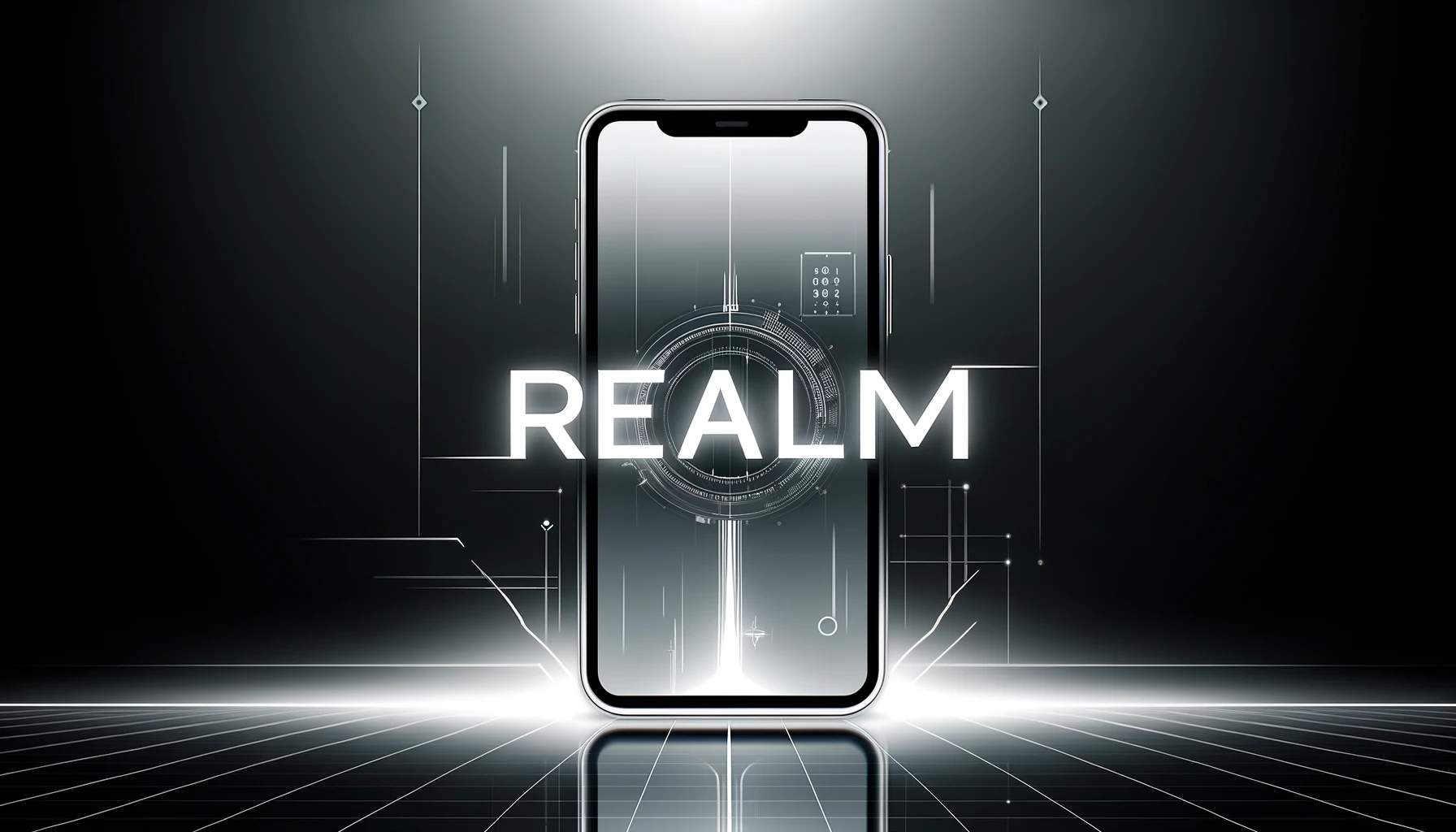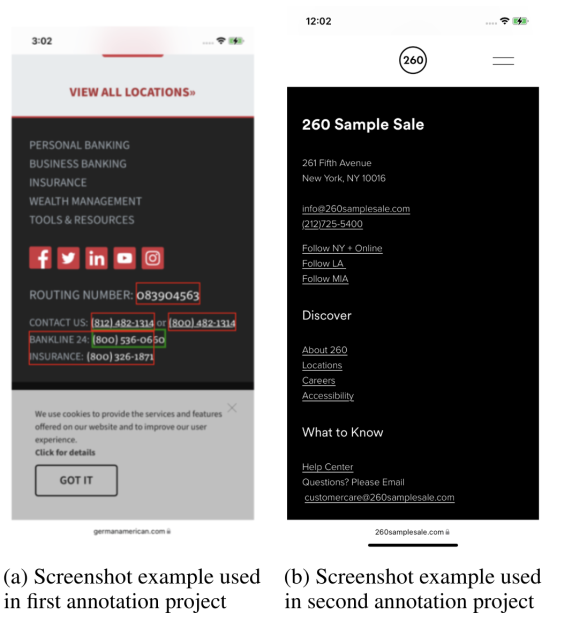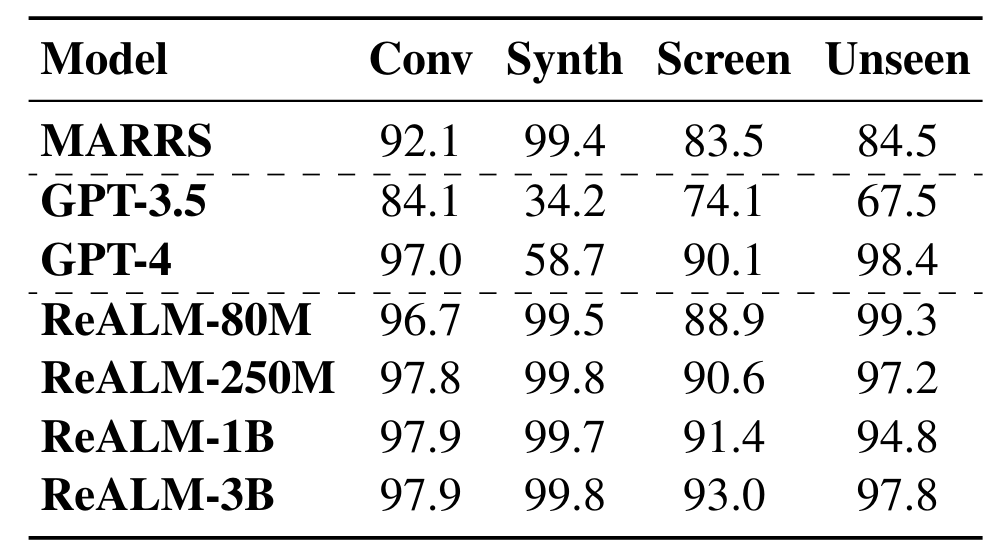Artificial Intelligence
Revolutionizing AI with Apple’s ReALM: The Future of Intelligent Assistants
Table Of Contents

In the ever-evolving landscape of artificial intelligence, Apple has been quietly pioneering a groundbreaking approach that could redefine how we interact with our Iphones. ReALM, or Reference Resolution as Language Modeling, is a AI model that promises to bring a new level of contextual awareness and seamless assistance.
As the tech world buzzes with excitement over OpenAI's GPT-4 and other large language models (LLMs), Apple's ReALM represents a shift in thinking – a move away from relying solely on cloud-based AI to a more personalized, on-device approach. The goal? To create an intelligent assistant that truly understands you, your world, and the intricate tapestry of your daily digital interactions.
At the heart of ReALM lies the ability to resolve references – those ambiguous pronouns like “it,” “they,” or “that” that humans navigate with ease thanks to contextual cues. For AI assistants, however, this has long been a stumbling block, leading to frustrating misunderstandings and a disjointed user experience.
Imagine a scenario where you ask Siri to “find me a healthy recipe based on what's in my fridge, but hold the mushrooms – I hate those.” With ReALM, your iPhone would not only understand the references to on-screen information (the contents of your fridge) but also remember your personal preferences (dislike of mushrooms) and the broader context of finding a recipe tailored to those parameters.
This level of contextual awareness is a quantum leap from the keyword-matching approach of most current AI assistants. By training LLMs to seamlessly resolve references across three key domains – conversational, on-screen, and background – ReALM aims to create a truly intelligent digital companion that feels less like a robotic voice assistant and more like an extension of your own thought processes.
The Conversational Domain: Remembering What Came Before
Conversational AI, ReALM tackles a long-standing challenge: maintaining coherence and memory across multiple turns of dialogue. With its ability to resolve references within an ongoing conversation, ReALM could finally deliver on the promise of a natural, back-and-forth interaction with your digital assistant.
Imagine asking Siri to “remind me to book tickets for my vacation when I get paid on Friday.” With ReALM, Siri would not only understand the context of your vacation plans (potentially gleaned from a previous conversation or on-screen information) but also have the awareness to connect “getting paid” to your regular payday routine.
This level of conversational intelligence feels like a true leap forward, enabling seamless multi-turn dialogues without the frustration of constantly re-explaining context or repeating yourself.
The On-Screen Domain: Giving Your Assistant Eyes
Perhaps the most groundbreaking aspect of ReALM, however, lies in its ability to resolve references to on-screen entities – a crucial step towards creating a truly hands-free, voice-driven user experience.
Apple's research paper discusses a novel technique for encoding visual information from your device's screen into a format that LLMs can process. By essentially reconstructing the layout of your screen in a text-based representation, ReALM can “see” and understand the spatial relationships between various on-screen elements.
Consider a scenario where you're looking at a list of restaurants and ask Siri for “directions to the one on Main Street.” With ReALM, your iPhone would not only comprehend the reference to a specific location but also tie it to the relevant on-screen entity – the restaurant listing matching that description.
This level of visual understanding opens up a world of possibilities, from seamlessly acting on references within apps and websites to integrating with future AR interfaces and even perceiving and responding to real-world objects and environments through your device's camera.
The research paper on Apple's ReALM model talks to the intricate details of how the system encodes on-screen entities and resolves references across various contexts. Here's a simplified explanation of the algorithms and examples provided in the paper:
- Encoding On-Screen Entities: The paper explores several strategies to encode on-screen elements in a textual format that can be processed by a Large Language Model (LLM). One approach involves clustering surrounding objects based on their spatial proximity and generating prompts that include these clustered objects. However, this method can lead to excessively long prompts as the number of entities increases.
The final approach adopted by the researchers is to parse the screen in a top-to-bottom, left-to-right order, representing the layout in a textual format. This is achieved through Algorithm 2, which sorts the on-screen objects based on their center coordinates, determines vertical levels by grouping objects within a certain margin, and constructs the on-screen parse by concatenating these levels with tabs separating objects on the same line.
By injecting the relevant entities (phone numbers in this case) into the textual representation, the LLM can understand the on-screen context and resolve references accordingly.
- Examples of Reference Resolution: The paper provides several examples to illustrate the capabilities of the ReALM model in resolving references across different contexts:
a. Conversational References: For a request like “Siri, find me a healthy recipe based on what's in my fridge, but hold the mushrooms – I hate those,” ReALM can understand the on-screen context (contents of the fridge), the conversational context (finding a recipe), and the user's preferences (dislike of mushrooms).
b. Background References: In the example “Siri, play that song that was playing at the supermarket earlier,” ReALM can potentially capture and identify ambient audio snippets to resolve the reference to the specific song.
c. On-Screen References: For a request like “Siri, remind me to book tickets for the vacation when I get my salary on Friday,” ReALM can combine information from the user's routines (payday), on-screen conversations or websites (vacation plans), and the calendar to understand and act on the request.
These examples demonstrate ReALM's ability to resolve references across conversational, on-screen, and background contexts, enabling a more natural and seamless interaction with intelligent assistants.
The Background Domain
Moving beyond just conversational and on-screen contexts, ReALM also explores the ability to resolve references to background entities – those peripheral events and processes that often go unnoticed by our current AI assistants.
Imagine a scenario where you ask Siri to “play that song that was playing at the supermarket earlier.” With ReALM, your iPhone could potentially capture and identify ambient audio snippets, allowing Siri to seamlessly pull up and play the track you had in mind.
This level of background awareness feels like the first step towards truly ubiquitous, context-aware AI assistance – a digital companion that not only understands your words but also the rich tapestry of your daily experiences.
The Promise of On-Device AI: Privacy and Personalization
While ReALM's capabilities are undoubtedly impressive, perhaps its most significant advantage lies in Apple's long-standing commitment to on-device AI and user privacy.
Unlike cloud-based AI models that rely on sending user data to remote servers for processing, ReALM is designed to operate entirely on your iPhone or other Apple devices. This not only addresses concerns around data privacy but also opens up new possibilities for AI assistance that truly understands and adapts to you as an individual.
By learning directly from your on-device data – your conversations, app usage patterns, and even ambient sensory inputs – ReALM could potentially create a hyper-personalized digital assistant tailored to your unique needs, preferences, and daily routines.
This level of personalization feels like a paradigm shift from the one-size-fits-all approach of current AI assistants, which often struggle to adapt to individual users' idiosyncrasies and contexts.
ReALM-250M model achieves impressive results:
- Conversational Understanding: 97.8
- Synthetic Task Comprehension: 99.8
- On-Screen Task Performance: 90.6
- Unseen Domain Handling: 97.2
The Ethical Considerations
Of course, with such a high degree of personalization and contextual awareness comes a host of ethical considerations around privacy, transparency, and the potential for AI systems to influence or even manipulate user behavior.
As ReALM gains a deeper understanding of our daily lives – from our eating habits and media consumption patterns to our social interactions and personal preferences – there is a risk of this technology being used in ways that violate user trust or cross ethical boundaries.
Apple's researchers are keenly aware of this tension, acknowledging in their paper the need to strike a careful balance between delivering a truly helpful, personalized AI experience and respecting user privacy and agency.
This challenge is not unique to Apple or ReALM, of course – it is a conversation that the entire tech industry must grapple with as AI systems become increasingly sophisticated and integrated into our daily lives.
Towards a Smarter, More Natural AI Experience
As Apple continues to push the boundaries of on-device AI with models like ReALM, the tantalizing promise of a truly intelligent, context-aware digital assistant feels closer than ever before.
Imagine a world where Siri (or whatever this AI assistant may be called in the future) feels less like a disembodied voice from the cloud and more like an extension of your own thought processes – a partner that not only understands your words but also the rich tapestry of your digital life, your daily routines, and your unique preferences and contexts.
From seamlessly acting on references within apps and websites to anticipating your needs based on your location, activity, and ambient sensory inputs, ReALM represents a significant step towards a more natural, seamless AI experience that blurs the lines between our digital and physical worlds.
Of course, realizing this vision will require more than just technical innovation – it will also necessitate a thoughtful, ethical approach to AI development that prioritizes user privacy, transparency, and agency.
As Apple continues to refine and expand upon ReALM's capabilities, the tech world will undoubtedly be watching with bated breath, eager to see how this groundbreaking AI model shapes the future of intelligent assistants and ushers in a new era of truly personalized, context-aware computing.
Whether ReALM lives up to its promise of outperforming even the mighty GPT-4 remains to be seen. But one thing is certain: the age of AI assistants that truly understand us – our words, our worlds, and the rich tapestry of our daily lives – is well underway, and Apple's latest innovation may very well be at the forefront of this revolution.


I have spent the past five years immersing myself in the fascinating world of Machine Learning and Deep Learning. My passion and expertise have led me to contribute to over 50 diverse software engineering projects, with a particular focus on AI/ML. My ongoing curiosity has also drawn me toward Natural Language Processing, a field I am eager to explore further.
You may like


Revolutionizing Your Device Experience: How Apple’s AI is Redefining Technology


Optimizing LLM Deployment: vLLM PagedAttention and the Future of Efficient AI Serving


Full Guide on LLM Synthetic Data Generation


Complete Guide on Gemma 2: Google’s New Open Large Language Model


Oracle’s HeatWave GenAI: The Future of AI-Powered Databases


10 Things to Know About Claude 3.5 Sonnet
Recent Posts
- Dr. Zohar Bronfman, Co-founder & CEO of Pecan AI – Interview Series
- The Ethical Minefield of AI Scaling: Building Trustworthy AI for Large-Scale Deployments
- Scientists Develop ‘Material Fingerprinting’ Method Using AI and X-ray Technology
- Llama 3.1: Meta’s Most Advanced Open-Source AI Model – Everything You Need to Know
- Revolutionizing Your Device Experience: How Apple’s AI is Redefining Technology


